Cercle Brugge had a promising transfer window in the summer bringing in plenty of players who have become regular starters for the side. Jesper Daland, Rabbi Matondo, Alex Milian, Sousa, Edgaras Utkus, and Boris Popovic all joined the club, with Cercle expecting great success this season under Yves Vanderhaeghe, but the opposite was true. Though he was brought in near the end of last season and saved the side from relegation, he was destined to bring them down this season. At the time of his sacking on the 28th of November, the club sat 17th place in the table, which is the relegation playoff place in Belgium.
After parting ways with Vanderhaeghe, Cercle decided to bring in 51-year old Austrian Dominik Thalhammer from LASK Linz. Since his arrival at the end of November, Cercle have been flying. Through his six matches in charge, Thalhammer has five wins, with the sole loss against league leaders Royale Union-Saint Gilloise, who they played close. Included in one of those wins as well was a 2-0 win over fierce rivals Club Brugge. Thalhammer has consistently stuck with a 4-2-3-1 formation since coming in, switching it from the usual 4-4-2 that Vanderhaeghe used. This tactical analysis will look at what Thalhammer has done tactically to improve the side, and an early look at his philosophy and ideas his is trying to implement with his new side.
Compact defensive shape
One needed switch in tactics that Thalhammer has implemented is a more compact defensive structure, with him looking for his side to instead sit deeper and invite pressure, but making sure they defend as one in a compact unit. This has also been more prevalent in the stats as well, with Cercle Brugge holding only, on average, 42% of the possession in all of Thalhammer’s matches in charge so far. Under Vanderhaeghe, this number was 50%. Also, Cercle have only conceded six goals in six matches so far under Thalhammer, a number that badly needed to be improved.
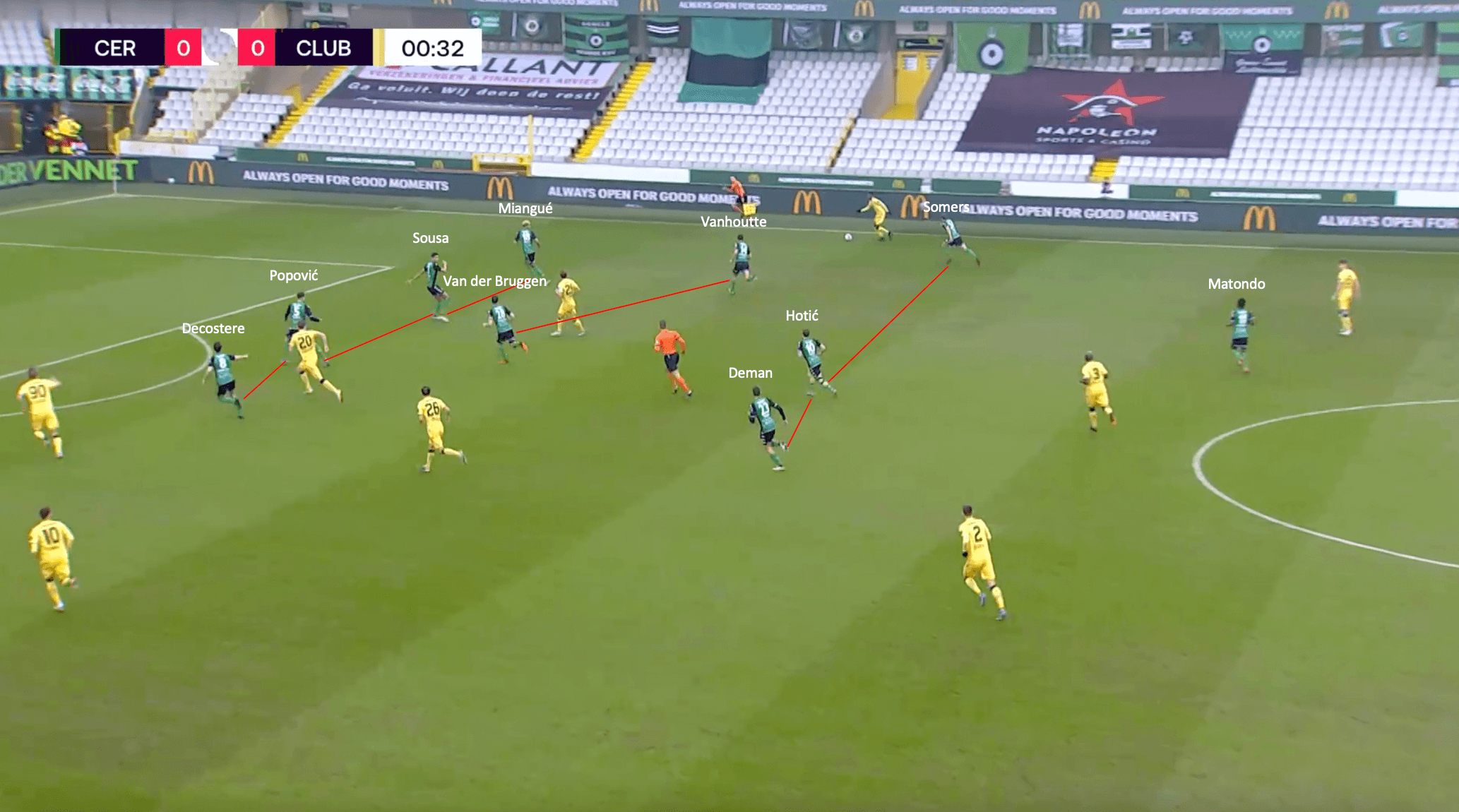
Here is an example of this compact defensive shape in the derby against Club Brugge. Though the match has just kicked off, the Cercle Brugge players keep their 4-2-3-1 shape, with the defensive and midfield lines staying tight and compact, meaning the only option for Club to attack is down the flanks. The attacking midfielders also drop into the defensive third to press from behind, hoping to force a mistake from the player in possession. This leaves Matondo free up top to keep the defensive line honest and pinned back. This compact shape defensively has helped them to only concede six goals in Thalhammer’s six matches in charge, with three of those goals allowed coming against league leaders USG.
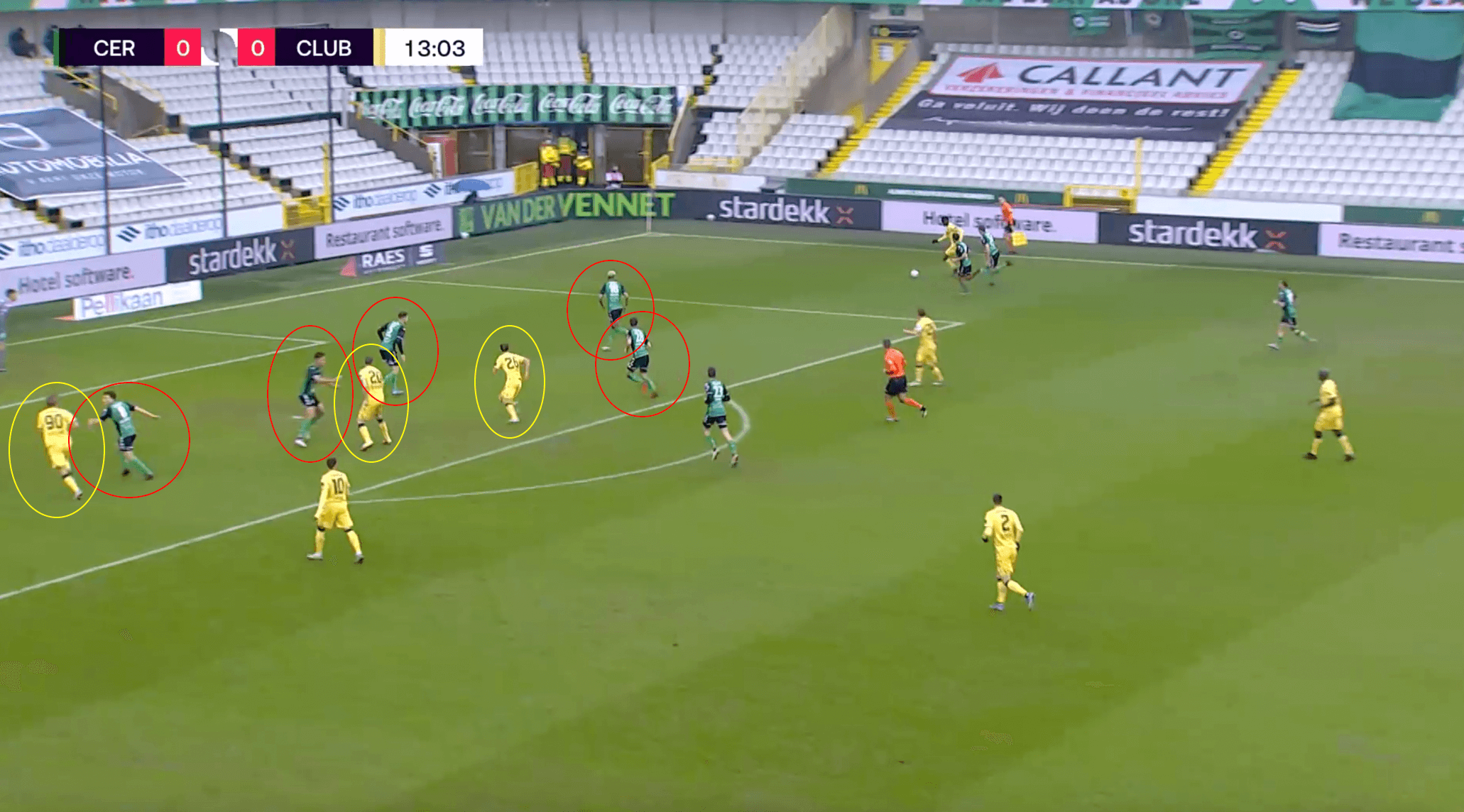
This image above once again shows the compact defensive nature that Thalhammer has been able to bring to the side. The ball is once again forced to be played wide by Club Brugge as they are keeping a tight and compact shape centrally. Through the ball carrier is able to get past the defenders and to the byline to send a cross into the box, Cercle already have a 5v3 numerical advantage inside the box. As a result, the cross does not make it past the first defender, who clears the ball out of danger.
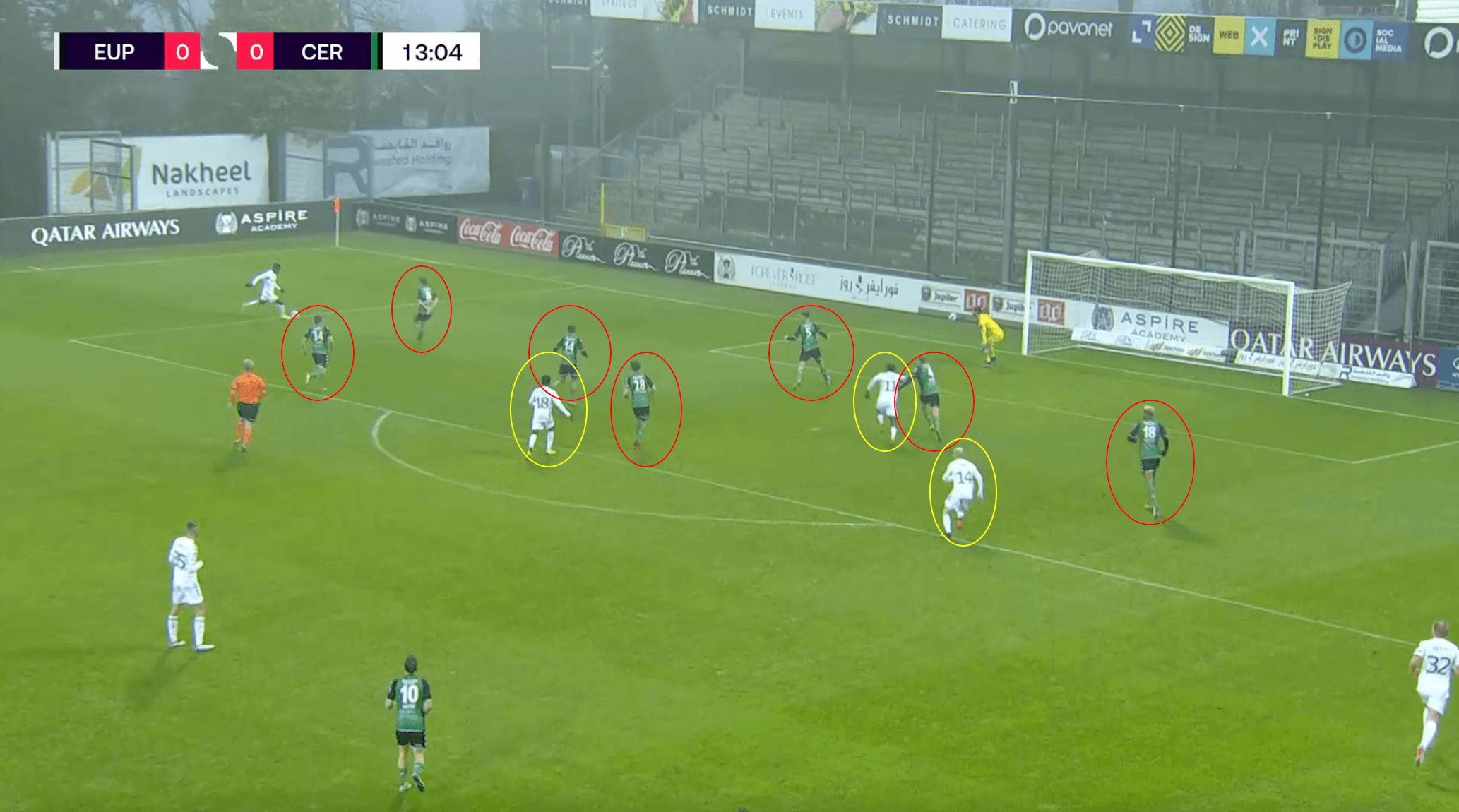
Once again against Eupen, the opposition have been able to play through Cercle’s high-octane press. Cercle however, are once again able to keep their defensive shape and force the ball wide. This once again results in a numerical superiority inside the 18-yard box; with seven defenders from Cercle matching up against three Eupen attackers. The result is a cross cleared behind by a Cercle defender for a corner. Thalhammer has been able to implement a solid defensive system at Cercle, a system where everyone knows what their responsibility is, and how they are going to go about doing it. This shows with the stat of six goals conceded in Thalhammer’s six matches in charge so far.
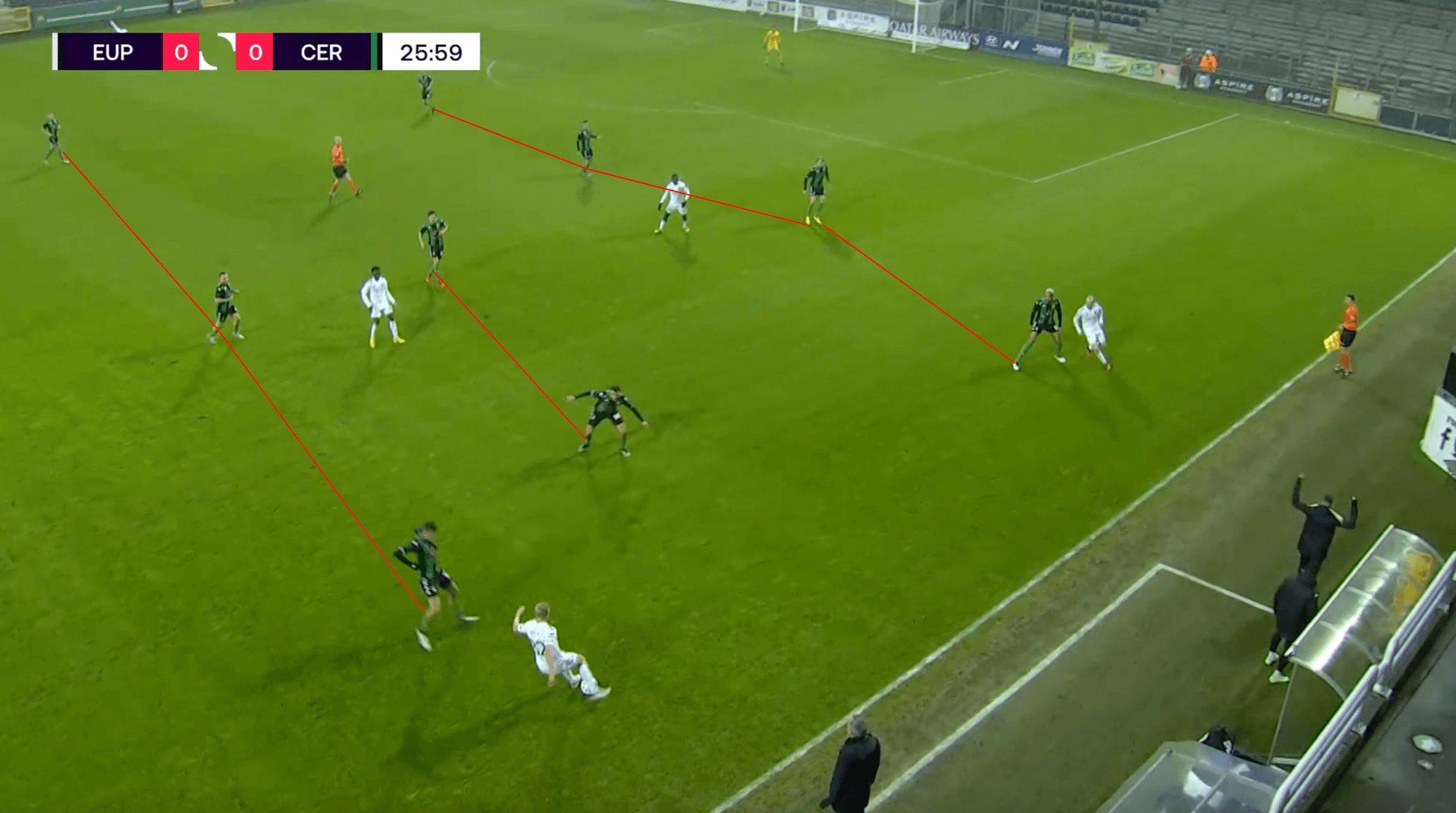
The image above from the match against Eupen once again shows their solid and compact defensive shape. Cercle stay at home and keep their 4-2-3-1 shape, no one decides to step out of position to try to engage and open up space for the opposition to exploit. The lines also play narrow and close together, meaning the only option for the ball carrier is to play the ball backwards. If he attempts to play the ball to the other midfielder centrally, he would be instantly closed down and possession turned over. The same can be said if the ball is played to the forward on the shoulders of the centre backs. This compact defensive shape means that Eupen has to play the ball backwards as a result, with Cercle Brugge able to then reset their press and try to win back possession in a dangerous area.
High press and man-to-man marking in midfield
Another thing that Thalhammer has been able to do to improve Cercle’s form is doing a better job of pressing high, as well as their man-to-man marking in midfield when the opposition looks to play short from the goalkeeper. Though their PPDA has been relatively similar under Thalhammer as opposed to Vanderhaeghe, (7.5 PPDA under Thalhammer compared to 8.3 under Vanderhaeghe), the quality of pressing has been much better. This better quality of pressing has also been partnered with a man-to-man marking system in midfield, which has more often than not, forced the opposition goalkeepers to play long or dangerous balls to teammates.
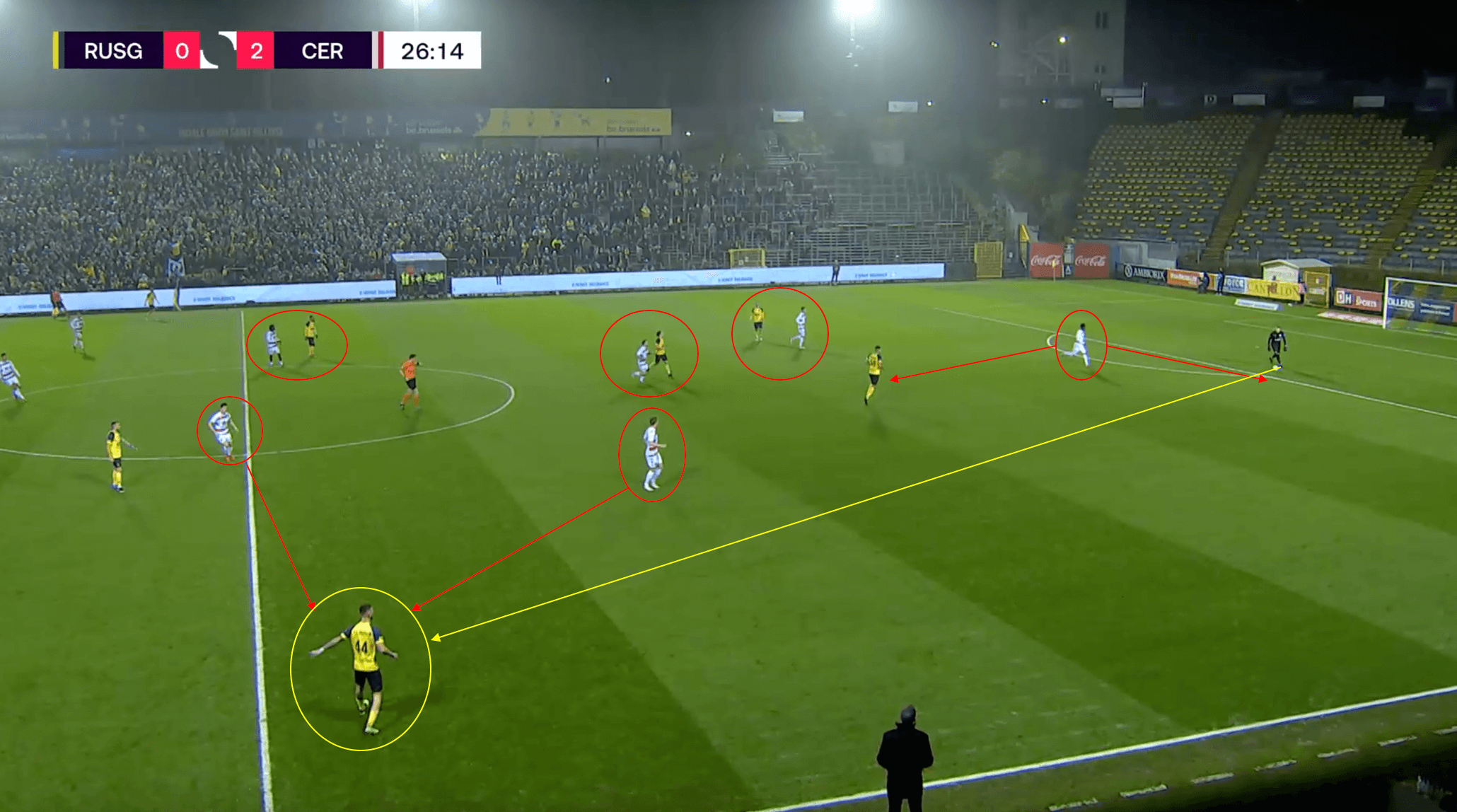
The image above shows a prime example of this press and man-marking by Cercle shown throughout this analysis. The USG goalkeeper is in possession and is being closed down by Matondo. Matondo is able to angle his run so that the ball isn’t able to be played short to the defender behind him. The rest of the possible passing options are all marked tightly in a man-to-man system, with the only free option being the wingback on the near touchline. This is where the goalkeeper plays the ball, but he is instantly closed down by two Cercle players, resulting in a loss of possession, and turnover in midfield.
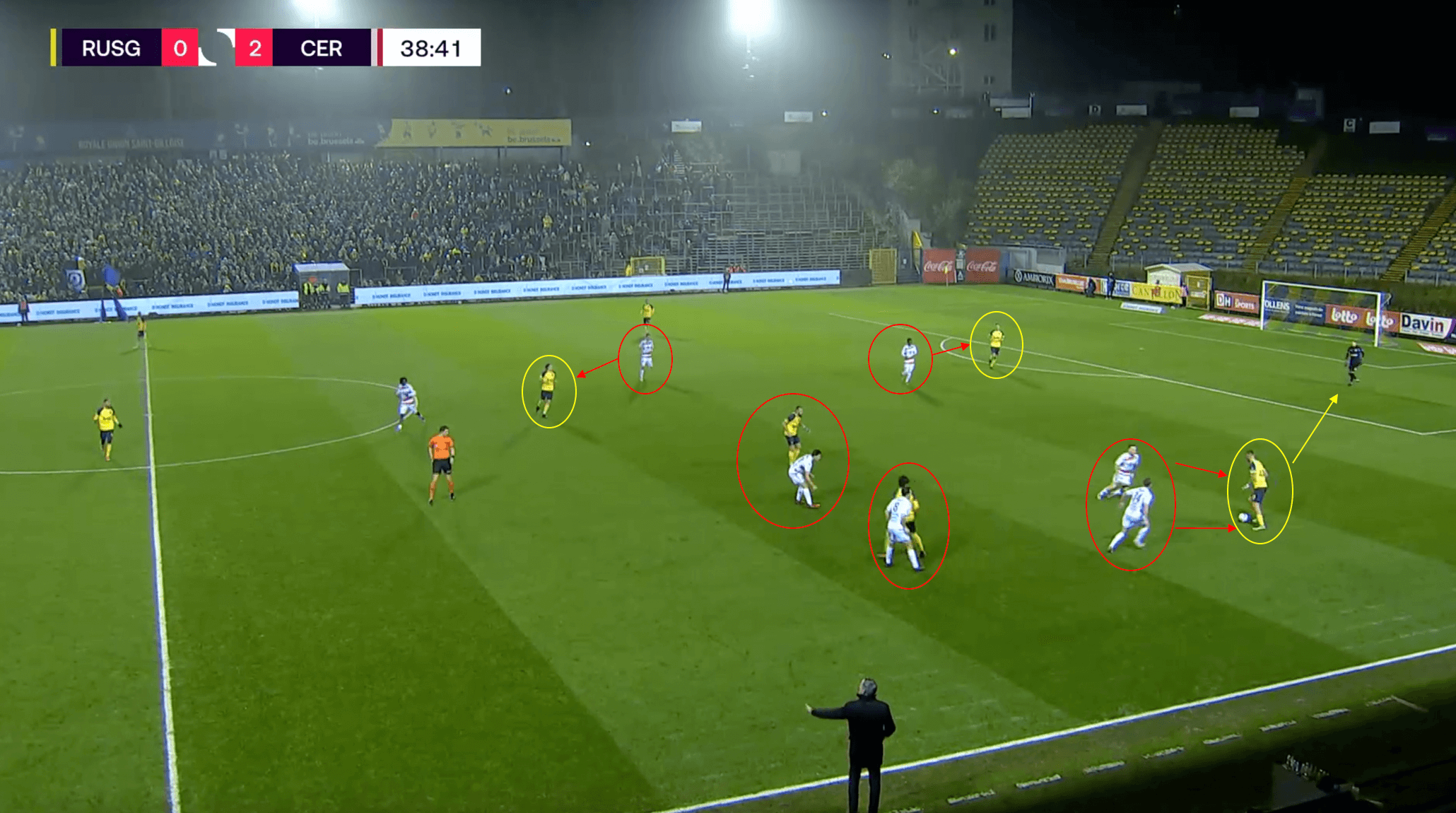
The image above from the same match shows this pressing and man-marking in action once again. The ball is played from the goalkeeper short to the centre half on the near touchline. Instantly, he is pressed and closed down by two Cercle players. All passing options are marked tightly, meaning the only option is to play back to the goalkeeper. When this happens, Matondo leaves his marker to press the goalkeeper, forcing him to play a quick pass long. Cercle end up winning the initial header and second ball, allowing them to once again retain possession in midfield and counter.
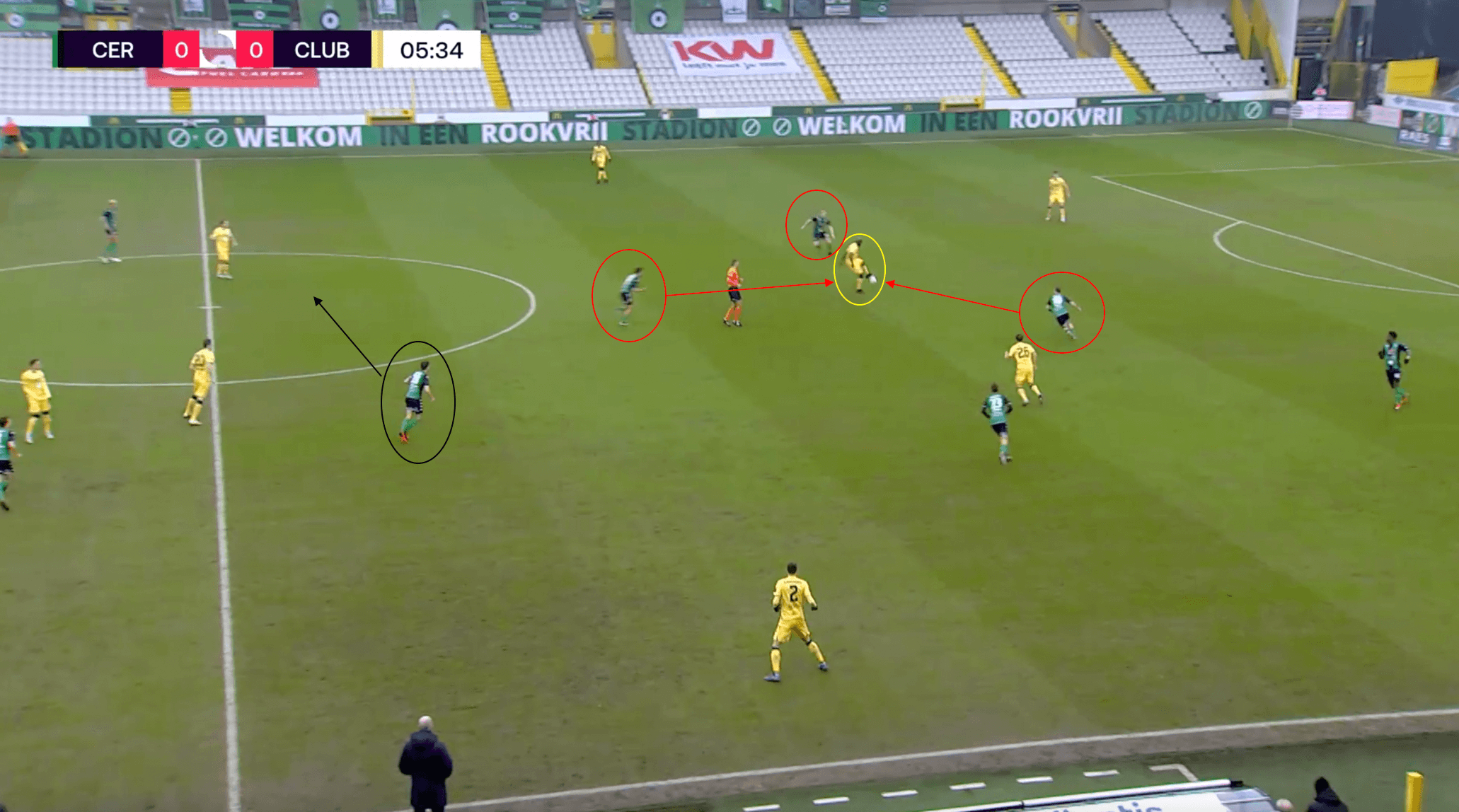
Here is another example of this high intensity pressing that Thalhammer has implemented at Cercle in the attacking third. Eder Balanta receives the ball for Club in midfield and is instantly pressed from all sides by three Cercle players. As a result, Balanta takes a bad touch and is forced to turn, instead of playing the simple pass back to his centreback. He then tries to play the ball into midfield, a pass that Vanhoutte reads, and intercepts in midfield to once again regain possession in a dangerous position for Cercle Brugge.
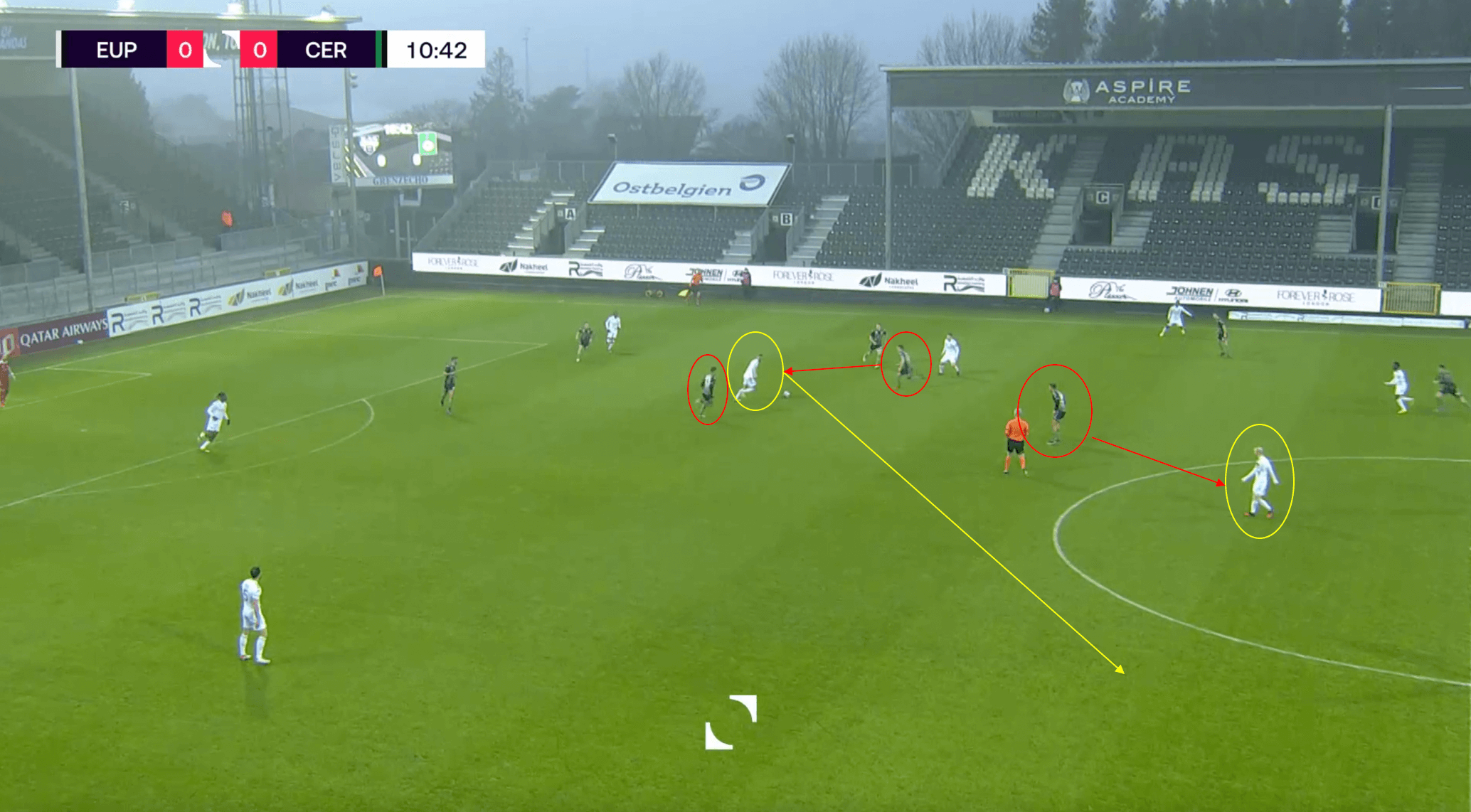
Another instance of this high press in midfield is displayed in the image above. Against Eupen, Cercle utilised the same strategy of pressing aggressively in midfield as well as man-marking to force turnovers. The Eupen player above has just received possession from his goalkeeper. He is instantly closed down by two Cercle defenders. He looks to play a pass to his midfielder, circled in yellow, but the free Cercle player moves to mark him. This results in a stray pass being played in midfield by the ball carrier, which Cercle jump on and proceed to counter with.
Conclusion
While sometimes coaching changes in the middle of the season do not work out; Cercle Brugge moving to bring in Dominik Thalhammer has paid dividends for the Bruges based side. His implementation of tactics used by sides like Manchester City and Liverpool have paid dividends. Though it is still early days, five wins from his first six matches in charge is a very good return so far. This coincides with a climb up the table all the way to 10th, with them now being 11 points above the drop. It remains to be seen whether or not Thalhammer can keep this momentum going with his side, but one thing is clear, the early signs look promising.





Comments